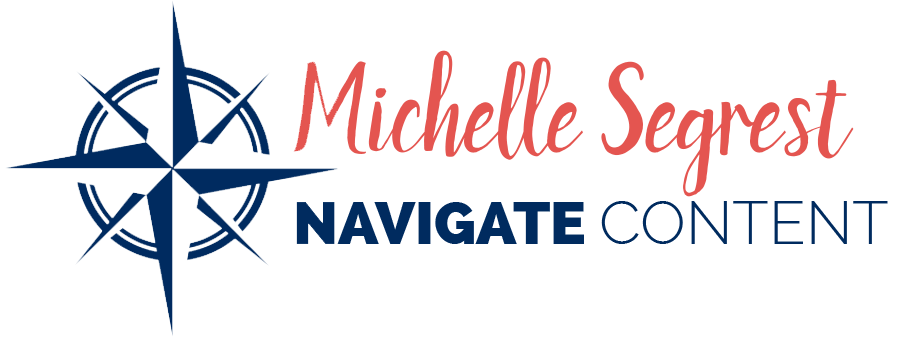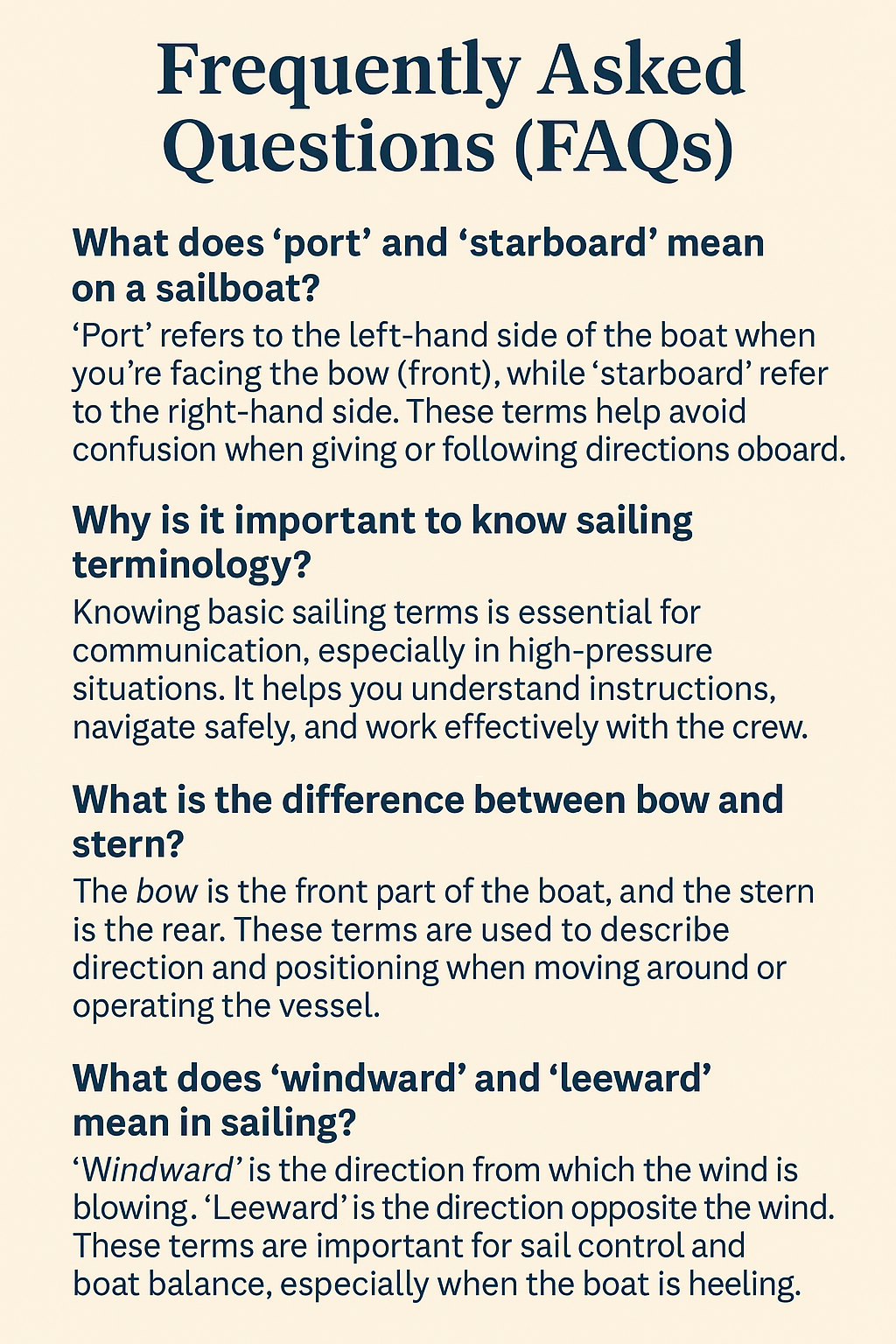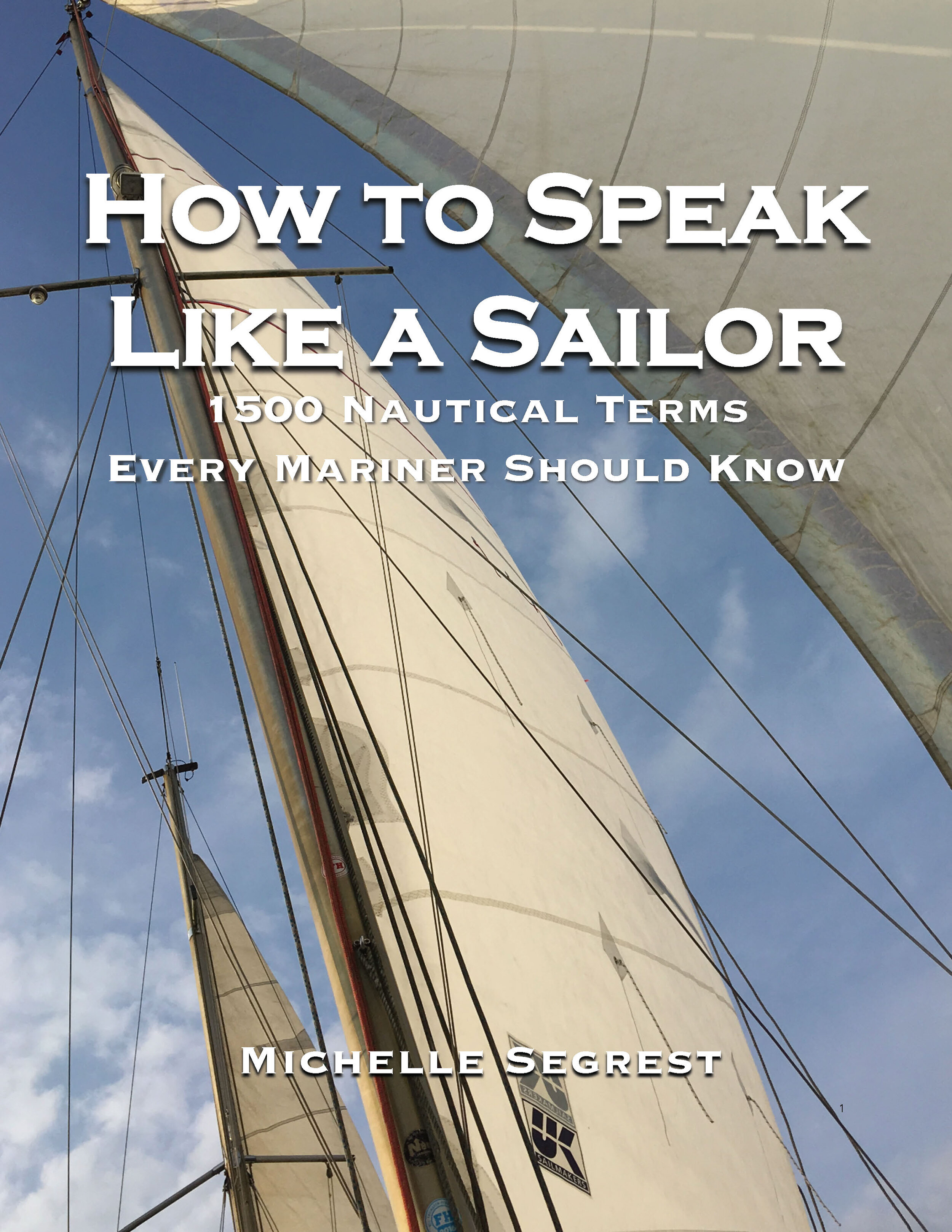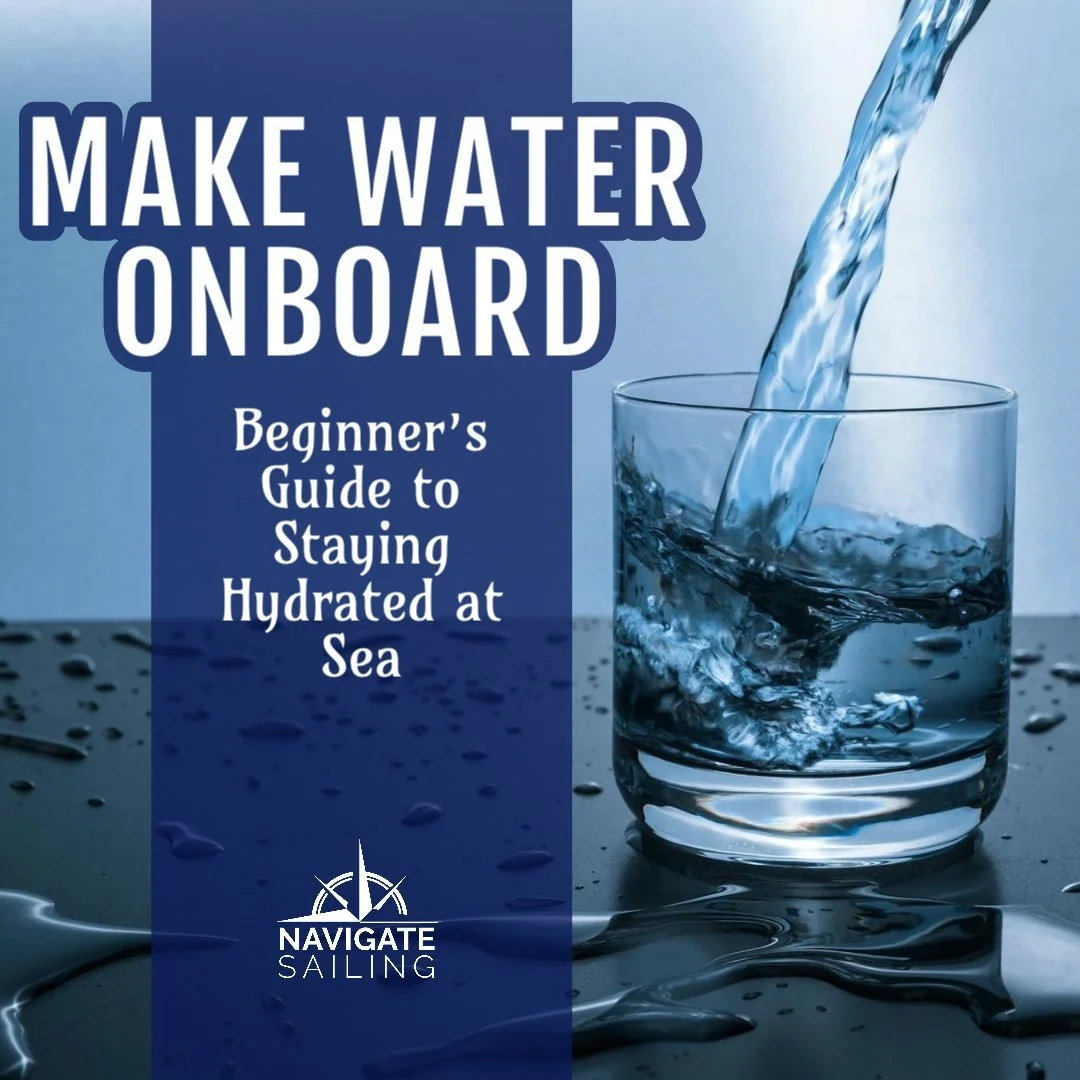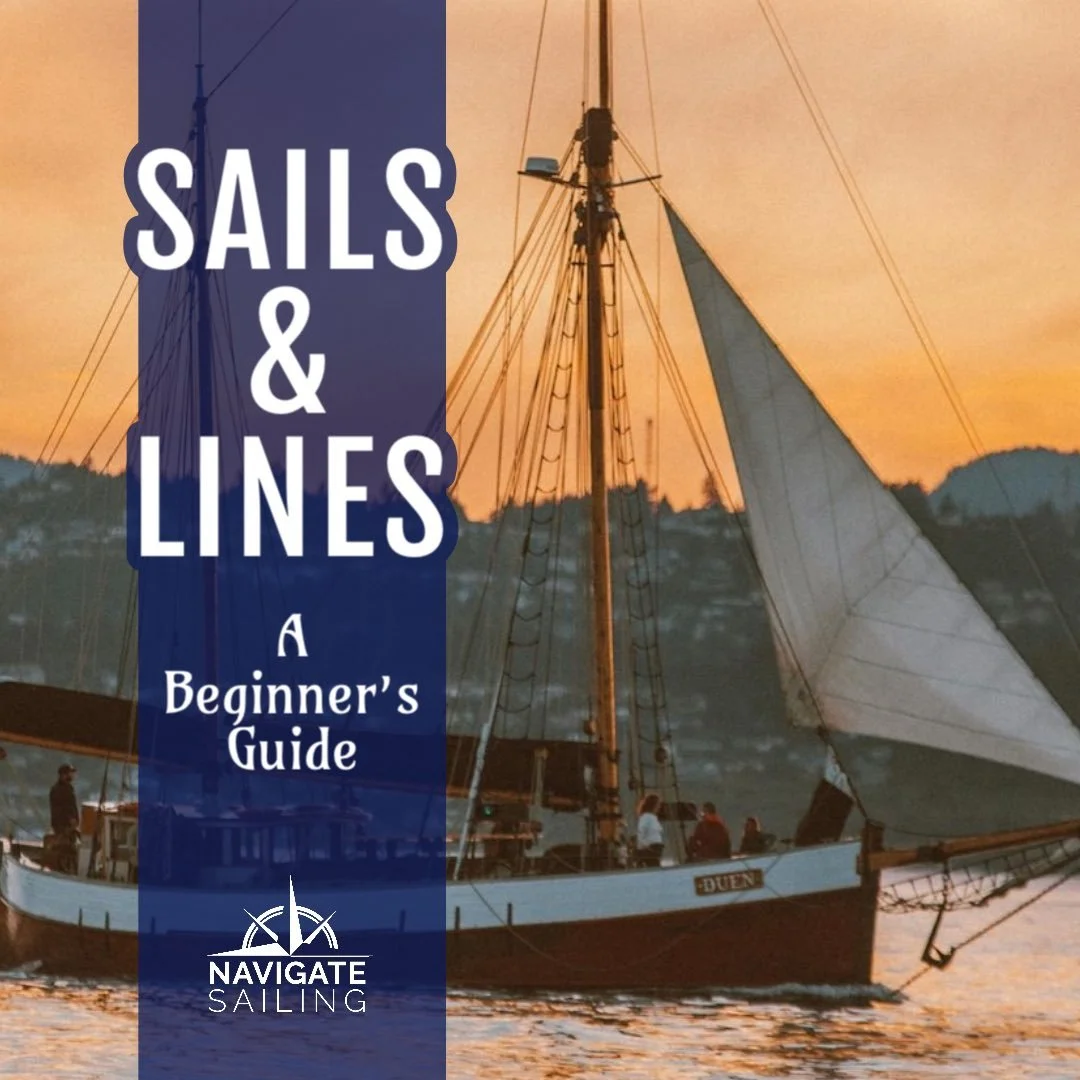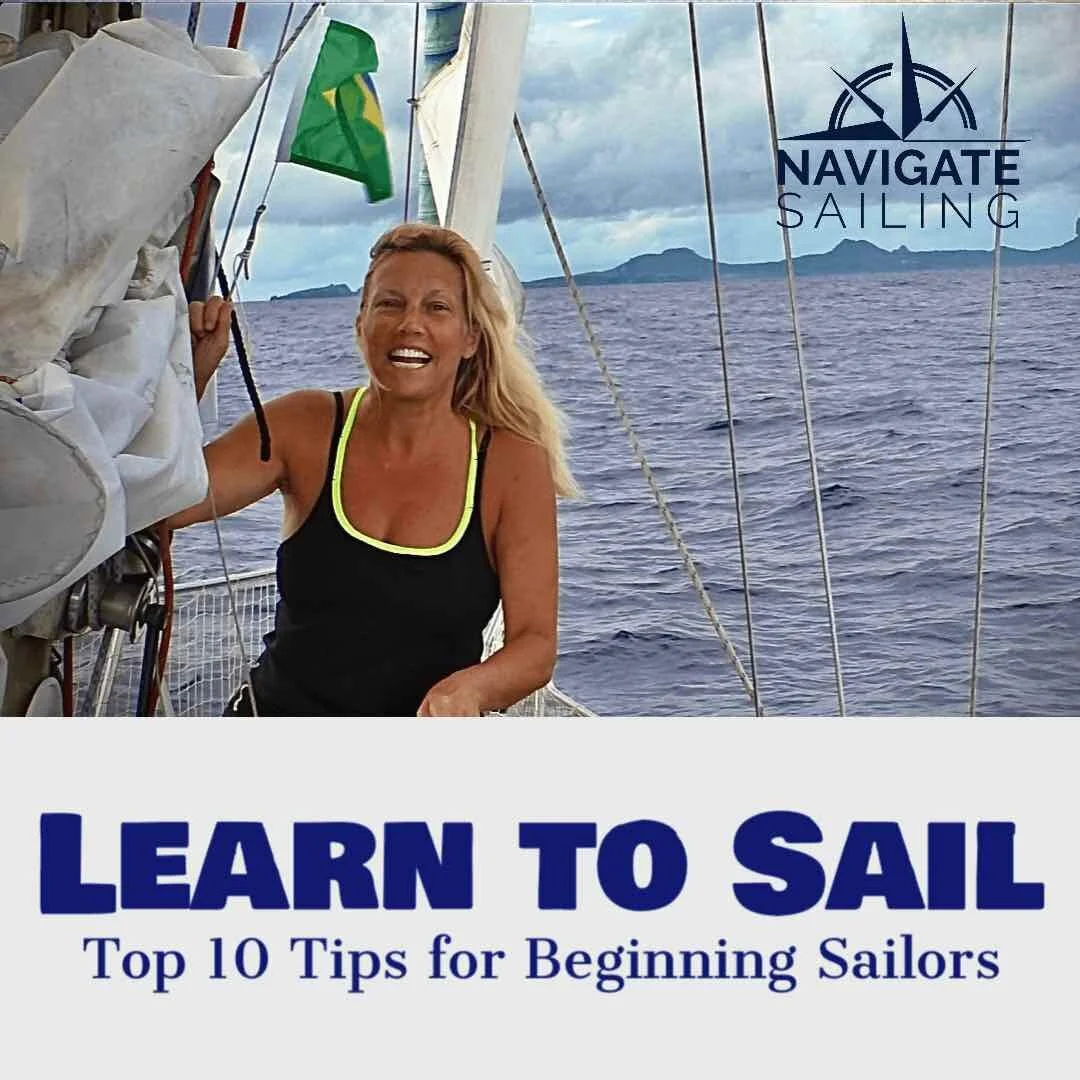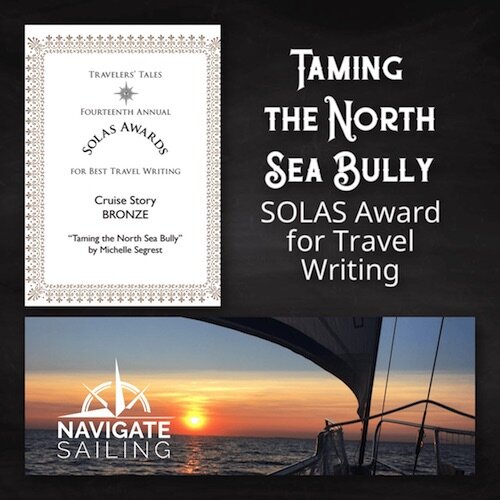Learn to Sail: 10 Essential Nautical Terms Every Beginner Should Know
/Master the language of sailing with these 10 must-know nautical terms. Essential for beginner sailors who want to navigate with confidence and communicate like a pro.
By Michelle Segrest – How to Get Your Sea Legs
Learning to sail isn’t just about hoisting a sail or steering the boat—it begins with learning the language. Sailing has a vocabulary all its own, and without it, even the most basic tasks can quickly become confusing—or dangerous.
Whether you're taking your first sailing course or stepping aboard for a weekend cruise, knowing the right terms helps you stay oriented, follow directions, and avoid costly mistakes.
What You’ll Learn
The most common nautical words and phrases used onboard a sailboat.
How clear communication improves safety, teamwork, and maneuver execution.
The difference between casual boating language and proper maritime terminology.
Sailing is a language of safety. You might think of “left” and “right” as universal, but on a sailboat, those words don’t apply. In changing wind conditions or emergencies, commands must be precise. Misunderstanding the difference between “port” and “starboard” can result in collisions or capsized boats.
Communication aboard depends on shared terms. Clear communication between crew members is critical, especially when docking, tacking, or navigating tight spaces. That’s why seasoned sailors rely on time-tested terminology—words that carry specific meaning and leave no room for interpretation.
The Top 10 Nautical Terms You Need to Know
Before you raise a sail or tie a knot, make sure these 10 foundational terms are part of your vocabulary. Mastering them will give you confidence, and more importantly, it will help keep you and your crew safe.
1. Port and Starboard
Forget left and right. On a boat, port refers to the left-hand side when you're facing the bow (front), and starboard refers to the right. A helpful memory trick: “port” and “left” both have four letters. These terms never change, regardless of your orientation on the boat.
2. Bow and Stern
The bow is the front of the boat; the stern is the rear. Understanding these terms is essential for orienting yourself and following instructions like “go to the stern cleat” or “secure the bow line.”
3. Aft and Fore
These terms describe direction within the boat. Aft refers to the inside back area, while fore (or “forward”) indicates the inside front area. You'll hear these used in phrases like “foredeck” or “aft cabin.”
4. Windward and Leeward
Wind dynamics are a central part of sailing. The windward side is the direction from which the wind is blowing. The leeward side is the opposite—away from the wind. When the boat heels (leans), windward is the high side, and leeward is the low side.
5. Heeling and Helm
Heeling happens when the boat leans due to wind pressure on the sails. It may feel dramatic, but it’s normal—and even helps the boat move efficiently. The helm is the control station from which the boat is steered, whether that’s a wheel or a tiller. The person at the helm is the helmsman.
Final Thoughts on Sailing for Beginners
Sailing isn’t just a sport or a mode of transportation—it’s a world with its own language, history, and rhythm. By learning these essential terms, you’ll gain the confidence to communicate clearly, follow orders precisely, and immerse yourself more fully in the sailing lifestyle.
Whether you’re signing up for your first sailing class or stepping aboard as a guest, speaking like a sailor is the first step to becoming one.
For more sailing resources, check out Michelle Segrest’s library of sailing books.
Bonus Resource: Expand Your Sailing Vocabulary
The world of sailing is rich with tradition and terminology. To go deeper, check out our glossary of 1,500+ nautical terms, How to Speak Like a Sailor. It’s a great companion for anyone looking to become fluent in the language of the sea and you can download it right now for just $5.
Key Takeaways
Speaking the language of sailing builds confidence and prevents confusion on the water.
Clear terminology reduces errors — especially during docking, anchoring, or unexpected situations.
The more you use these terms, the faster they become natural and automatic.
Michelle Segrest is an experienced sailor who has sailed more than 10,000 nautical miles, including a year-long, cross-Atlantic voyage with her two beagles, Cap’n Jack & Scout. She is the author of a best-selling sailing memoir, Living Life Sideways and a series of children’s travel books that focuses on teaching kids about geography, culture, and history. This blog focuses on expert tips for beginners and tips for sailing with dogs.
